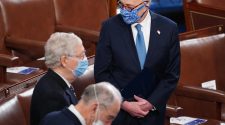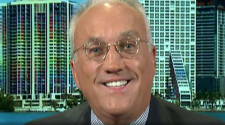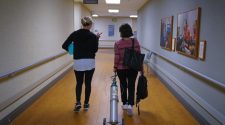An Amnesty International report says that more health workers have died in Mexico than anywhere else. David Agren explores why.
Less than 3 weeks after Mexico recorded its first COVID-19 case, staff from a Mexican Social Security Institute (IMSS) hospital blocked a Mexico City road, demanding medical supplies and personal protective equipment (PPE). At least 70 protests have followed, according to a report by six former health secretaries, with medical staff decrying shortages of supplies and tests, along with a lack of hospital infrastructure and even proper training.
“We didn’t even have access to a single test. Now we have some”, said Rafael Soto, an IMSS nurse and spokesperson for the National Union of Health Workers, an organisation formed during the pandemic to improve labour conditions. He said that more equipment has arrived since the protests started, but it is poor quality.
The COVID-19 pandemic has heaped misery on Mexico, with more than 70 000 deaths, a tally surpassed only by the USA, Brazil, and India. The country has pursued a strategy of not testing widely or contact tracing, but instead monitoring hospital capacity to inform the relaxation of restrictions.
97 632 Mexican health-care workers were infected between Feb 28 and Aug 23, according to the Pan American Health Organization. On Sept 2, the organisation’s director Carissa Etienne said that a survey found that nearly half of Mexican health workers were not provided PPE at work.
A Sept 3 report from Amnesty International said that more Mexican health-care workers had died of COVID-19 (1320) than in any other country. The USA ranked second with 1077 deaths and the UK third with 677. The Mexican health secretariat did not dispute the figures, but called the comparison with other countries unfair because none used the same method for recording deaths.
In a press conference, Mexico’s Director of Epidemiology José Luis Alomía said that Mexican health-care workers with COVID-19 had a mortality rate of 3·8%, lower than that of the general population. Alomía said that 1410 health-care workers had died, almost half of whom were doctors.
“[Health-care workers] get less seriously ill and die less than the general population”, Alomía said. “If these two indicators were above what we see in the general population, we might think that it’s a risk to be a health professional in Mexico. But it’s not.”
Brenda Crabtree Ramírez, a physician and infectious disease researcher at the National Institute of Medical and Nutritional Sciences Salvador Zubirán, said that preliminary results of a study using Mexico City data showed that health-care workers were dying of COVID-19 at a lower rate than that of the population as a whole. Mexican health-care workers were infected at much higher rates than their counterparts in other countries, however.
Madeleine Penman, a researcher with Amnesty International, said Mexico is “keeping a very disaggregated register of the numbers on health worker deaths. In the Americas, not all countries are actually counting the deaths of health workers with the same detail that Mexico is.” She said that Brazil is undercounting its health worker deaths.
Health-care workers, nurses, and researchers offered varying explanations for Mexico’s numbers, but working conditions are often mentioned. “A lot of people in the health sector workforce are basically working on informal contracts”, said Penman. “That affects a lot of things in terms of job security and access to sick leave.”
Soto said that unions representing health workers were keeping quiet on issues of workplace safety, preferring to please the government rather than address members’ demands. Some protest leaders, he said, have had their jobs terminated by their employers or have been sanctioned by their unions.
Physicians in Mexico routinely have multiple jobs—often a position in a public institution, augmented by private practice—which compounds issues of stress and exhaustion. Salaries in Mexico’s top public hospitals seldom top 1000 monthly, with most physicians earning substantially less, according to interviewees.
Daniel Tovar, an emergency medicine physician treating COVID-19 patients in Matamoros on the US border, said “I earn what a medical assistant would make in the United States…That’s why we work two or three jobs, in addition to giving classes”.
Continuing education for physicians can also be lacking. Crabtree recalled treating a physician with a cough, fever, and diarrhoea, who waited a week to seek treatment and continued seeing patients. “It never crossed his mind this was COVID-19”, she said.
Doctors themselves are often not pictures of health, many physicians have noted. “We’re an obese country with many diabetics and people with hypertension” said Álvaro Martínez de León, an internal medicine specialist in Matamoros, where he said three physicians died of COVID-19 in early September: two were obese and one had hypertension. “We have many people with these illnesses in the medical community”.
Article Info
Publication History
Published: 19 September 2020
Identification
DOI: https://doi.org/10.1016/S0140-6736(20)31955-3
Copyright
© 2020 Elsevier Ltd. All rights reserved.
ScienceDirect
Access this article on ScienceDirect



















